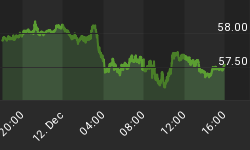
I continue to find the very same behavioral biases that provided prescient contrarians the initial clues (chasing the Greenspan Put - i.e. Moral Hazard) to start moving away from one asset class towards another; on the back side of the cycle - with investors that are anything but contrarian and long past prescient.
In 2000 and 2001, as the pendulum was swinging away from equities towards the safe(r) haven and sturdier shores of the commodity sector, the Fed reached for the monetary fire hose to provide both structural and psychological liquidity to a financial system under duress. And although it initially provided momentary support towards equities and the seeds for the secular bull market in commodities, stocks eventually succumbed to the path of least resistance. It was a bear market and the psychological bid of the Greenspan Put was now immaterial to the larger forces at work.
Today, we have a very similar dynamic in the now matured commodity sector with the prospect of QE and central bank interventions on the table. Whether emanating from the Fed, the ECB or the PBC - resource investors now work with a dangerous level of moral hazard in the face of reality within their respective investment theses. The general thought has been: more easing - higher commodity prices. And although this causality helped drive the dramatic returns since the fall of 2008, the several dozen easing initiatives by the world's major central banks over the past year have done very little to arrest the decline in the commodity sector that began in May of 2011.
And although I have looked at the Nasdaq or the NDX (circa 2000-2002) comparative over the past year repeatedly - the shoe continues to fit in various iterations and along multiple timeframes with the resource and precious metals sector.
Despite a more dramatic decline in the Nasdaq between 2000 and 2001, I believe we will see a similar pattern unfurl in the CRB as the trend continues along the path of least resistance - and as late and dogmatic investors turn from denial to fear. The immediate set-up for a turn lower is primarily based on the extreme negative relative strength and technical structure of the CRB's low in June and the very strong retracement rally that now appears to be rolling over at the 61.8% fibonacci level from the yearly low.

As always - Stay Frosty.


















